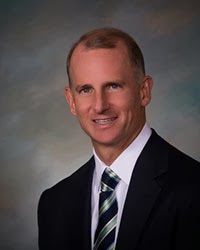By Dr. Anthony M. Puntillo, DDS, MSD
 It was not that long ago when we all relied upon our friendly postmen and postwomen for the delivery of our letters. Today the United States Postal service is scaling back mail operations in favor of package delivery, and the majority of our written communication is transmitted electronically. Is the delivery of healthcare, and particularly orthodontic care, headed for a similar fate? A Computerworld article, cited research by Deloitte, which projected 75 million of 600 million appointments in 2014 with general practitioners would involve electronic or eVisits¹. “Electronic visits or telemedicine are comprised of electronic document exchanges, telephone consultations, email or texting, and videoconferencing between physicians and patients. The vast majority of eVisits, according to Deloitte, are likely to focus on capturing patient information through electronic forms, questionnaires and photos.” In the state of Texas, new legislation has opened the door for physicians to be compensated for remotely providing care to children through a video connection to the school nurses’ office². Market forces including an expansion of access to care, increased efficiency, and financial incentives are driving all of these changes. Just as eMail though has not completely eliminated the need for our postal service, eVisits are not likely to eliminate the need for all direct patient to physician interaction. However, there can be no denying that technology is changing the manner in which healthcare is delivered and our specialty will not be immune.
It was not that long ago when we all relied upon our friendly postmen and postwomen for the delivery of our letters. Today the United States Postal service is scaling back mail operations in favor of package delivery, and the majority of our written communication is transmitted electronically. Is the delivery of healthcare, and particularly orthodontic care, headed for a similar fate? A Computerworld article, cited research by Deloitte, which projected 75 million of 600 million appointments in 2014 with general practitioners would involve electronic or eVisits¹. “Electronic visits or telemedicine are comprised of electronic document exchanges, telephone consultations, email or texting, and videoconferencing between physicians and patients. The vast majority of eVisits, according to Deloitte, are likely to focus on capturing patient information through electronic forms, questionnaires and photos.” In the state of Texas, new legislation has opened the door for physicians to be compensated for remotely providing care to children through a video connection to the school nurses’ office². Market forces including an expansion of access to care, increased efficiency, and financial incentives are driving all of these changes. Just as eMail though has not completely eliminated the need for our postal service, eVisits are not likely to eliminate the need for all direct patient to physician interaction. However, there can be no denying that technology is changing the manner in which healthcare is delivered and our specialty will not be immune.
It may be hard to conceive how we will remotely align teeth. However, the 1999 introduction of digitally created tooth moving clear aligners (Align Technology, Inc.) opened the door to the Orthodontic digital age and fortunately or unfortunately that door cannot be closed. Recently, while attending an orthodontic meeting overseas, I noticed a new company that seemed to be garnering a great deal of attention, Dental Monitoring (dental-monitoring.com). This company claims to be the “first monitoring solution in orthodontic care.” Patients capture their tooth movements with their smartphones and orthodontists can remotely monitor and direct treatment via an app. Whether or not this company is the first is irrelevant. It will certainly not be the last. The same efficiencies and cost advantages that eVisits offer physicians in the general practice of medicine also apply to orthodontic practices. To be clear, I am not advocating that remote care is better or even desirable. The purpose of this blog is to raise our members’ awareness and open discussions regarding technological changes in our profession. In the last 20 years, we have incorporated electronic patient records, CBCTs, intraoral scanners, and even 3D printing into our practices. As we all adapt to the expectations of the Millennial Generation what will our practices look like 20 years from now?
1. Almost one in six doctor visits will be virtual this year. Computerworld: Mearian, L. August 8, 2014.
2. Law could bring remote doctor visits to schools. The Texas Tribune: Rocha, A et. al., August 23, 2015.
Wow! Of all things digital i had never though or heard that some company is working on digital aligners. Though it’s an interesting space that could be explored more. Nothing is impossible for sure.
There is little doubt that digital technologies will change and eliminate many professions, including the mechanical part of ours. Think about it. Digital Records. Remote analysis and treatment planning. CAD/CAM design and manufacture of appliances. Does it really take a doctor to change a pre-manufactured wire? Distance monitoring of progress. And, voila! Straight Teeth.
So what are we to do? How about broadening our vision to include more than just the teeth and Angle classification? How about looking at breathing and function and health? How about teaching families and children how to be healthy and grow up with straight teeth? How about becoming physicians of the face? Let’s see a robot do that!